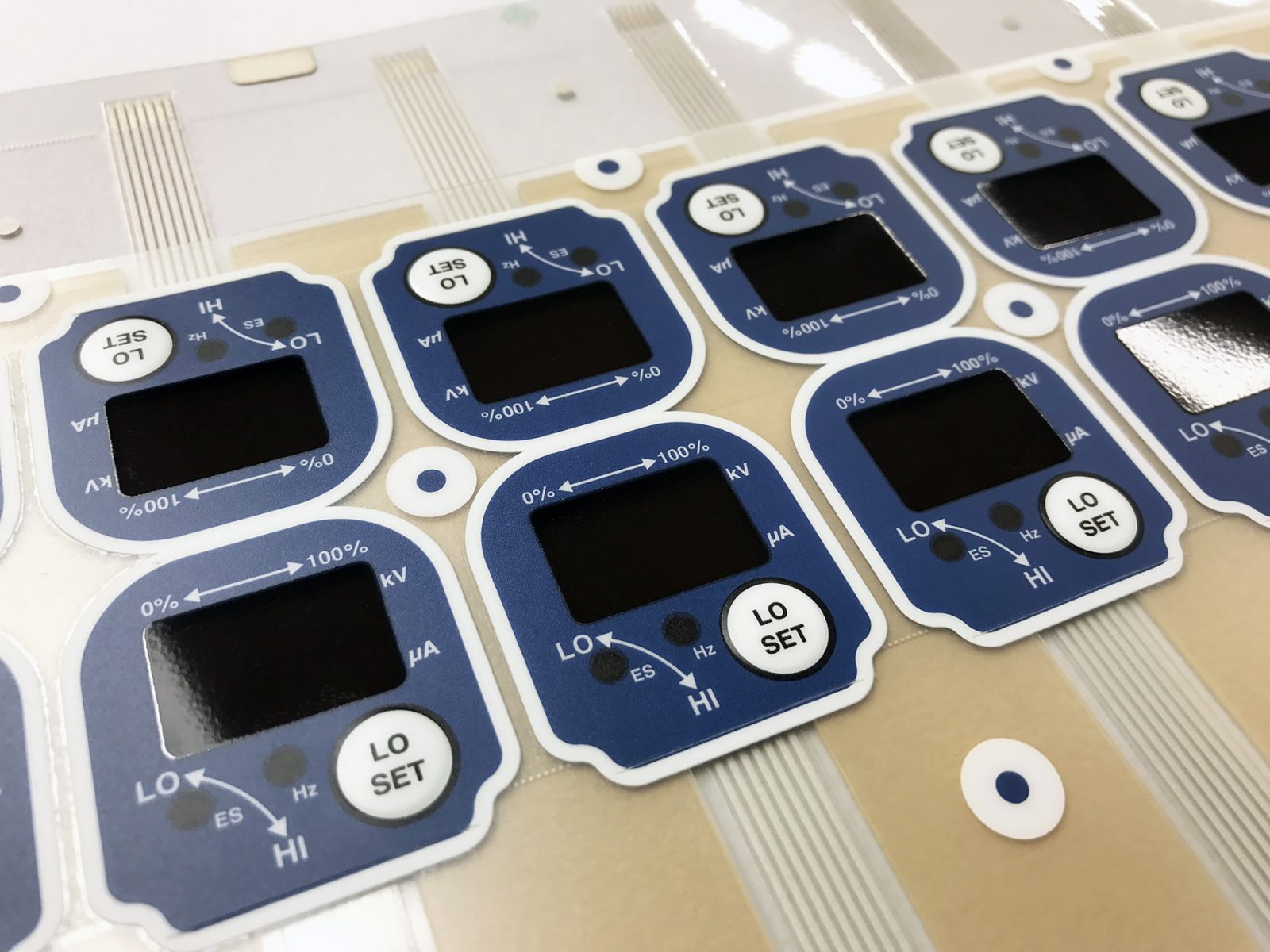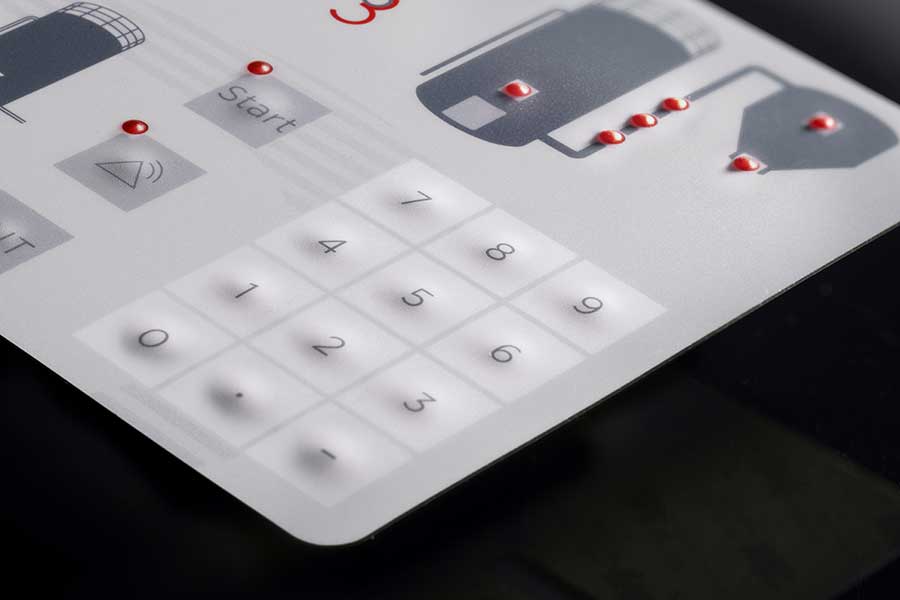How Membrane Switches Enhance User Experience in Consumer Electronics
How Membrane Switches Enhance User Experience in Consumer Electronics
Blog Article
Membrane Layer Switch Over Technology: The Trick to Trustworthy and Affordable Interfaces
Membrane layer switch innovation has actually emerged as a pivotal part in the style of individual interfaces, supplying both integrity and cost-effectiveness across a diverse variety of applications. As we discover the multifaceted advantages of membrane layer buttons, their possibility for technology elevates questions about future applications and evolving fads.
Recognizing Membrane Layer Switch Technology
Membrane layer switch innovation is a commonly utilized interface remedy in numerous digital devices, using a seamless blend of functionality and design. This modern technology incorporates multiple layers of materials, usually containing a visuals overlay, spacer layer, and a circuit layer. The visuals overlay displays the user interface elements, while the spacer layer divides the circuit layer from the overlay until a customer turns on a switch.
When pressure is applied to the overlay, the circuit layer finishes the electrical circuit, sending out a signal to the device. This mechanism enables various setups, consisting of tactile responses and backlighting choices, enhancing user interaction. Membrane switches are normally made utilizing long lasting products such as polyester or polycarbonate, making certain durability and resistance to environmental aspects like moisture and dust.
The versatility of membrane layer changes allows their application in varied sectors, including medical gadgets, consumer electronics, and commercial controls. Their small design allows for integration right into space-constrained settings, offering an effective individual interface without endangering visual charm. Recognizing the details of membrane layer switch technology is important for suppliers and designers looking for to develop reliable and efficient human-machine interfaces.
Trick Benefits of Membrane Layer Switches
While different interface solutions exist, membrane layer switches over offer unique advantages that make them a preferred choice in countless applications. One of the main benefits is their durability; membrane switches are created to endure severe ecological conditions, including wetness, dirt, and temperature level changes, guaranteeing long-lasting performance. This resilience dramatically lowers the need for frequent replacements, thus decreasing overall upkeep expenses.

Furthermore, membrane layer switches are light-weight and small, making them ideal for applications where area is restricted. Their low-profile style adds to a sleek appearance without endangering capability.
Cost-effectiveness is likewise a noteworthy advantage, as the manufacturing procedure for membrane layer switches tends to be more economical contrasted to conventional mechanical switches. This cost, incorporated with their integrity and simplicity of installment, positions membrane switches as a functional service for a vast array of industries looking for reliable and effective interface.
Applications Across Numerous Industries
Exactly how do membrane buttons adjust to the varied demands of numerous industries? Membrane switch modern technology is significantly identified for its versatility, making it appropriate for a large array view website of applications across multiple markets.
In customer electronics, membrane layer switches offer a portable remedy for push-button controls and home appliances, enhancing user experience with intuitive style. Additionally, the industrial industry leverages membrane layer switches for machinery control board, taking advantage of their resistance to rough environments, such as dampness and dirt.
Armed forces and aerospace applications likewise use membrane layer switches for their dependability and ability to endure severe problems, making certain operational performance in important circumstances. Moreover, the food and drink industry takes on these buttons for automated systems, where hygiene and convenience of operation are extremely important. Eventually, membrane buttons are customized to meet the one-of-a-kind demands of each sector, showing their vital function in modern-day technology interfaces
Design and Customization Choices

In the realm of membrane layer button innovation, layout and personalization choices play a crucial role in boosting performance and individual interaction. These switches can be tailored to satisfy certain functional needs and aesthetic preferences, making them versatile components in different applications.
Among the main modification choices is the layout of the switch itself, which can be created to suit distinct customer interfaces and ergonomic considerations. By readjusting the shape, size, and plan of buttons, manufacturers can produce intuitive layouts that help with convenience of usage. In addition, the consolidation of various shades and visuals overlays permits branding and boosted visibility, making certain that customers can promptly identify features.
Additionally, membrane layer buttons can be engineered with numerous responsive feedback devices, such as elevated buttons or distinct clicks, to enhance the customer experience. Various products can also be picked for toughness and environmental resistance, dealing with elements such as wetness, temperature level fluctuations, and chemical exposure.
Ultimately, the considerable layout and customization options available in membrane switch technology equip businesses to produce tailored solutions that not only meet functional needs yet also straighten with their branding and functional needs.

Future Fads in Membrane Switches
As membrane button technology remains to develop, future patterns are increasingly concentrated on enhancing customer experience and integrating sophisticated functionalities. One considerable fad is the combination of touch-sensitive and capacitive innovations right into standard membrane buttons. This growth enables for even more instinctive individual interfaces, giving responsive comments while keeping a smooth design.
Another emerging fad is like it making use of eco-friendly materials, driven by the expanding demand for sustainable manufacturing methods. Makers are looking for to decrease their carbon footprint by utilizing recyclable substrates and low-impact inks, straightening with global sustainability goals.
Furthermore, the increase of the Net of Points (IoT) is prompting the unification of smart features right into membrane layer buttons. Enhanced connection options will certainly make it possible for devices to interact with each various other, read the full info here permitting for smooth combination into wider systems.
In addition, advancements in printing innovations, such as digital printing, are enabling greater layout adaptability and personalization. This makes it possible for manufacturers to generate intricate layouts and lively colors cost-effectively.

Final Thought
In verdict, membrane switch modern technology represents an important development in user interface layout, offering substantial benefits in sturdiness, customization, and cost-effectiveness. Its widespread applicability across varied industries highlights its value in contemporary innovation. As innovations continue to arise, especially in touch-sensitive user interfaces and sustainable products, the capacity for membrane layer changes to enhance customer experience and functionality continues to be encouraging. Continued exploration of this modern technology will likely produce further enhancements and expand its scope in future applications.
Report this page